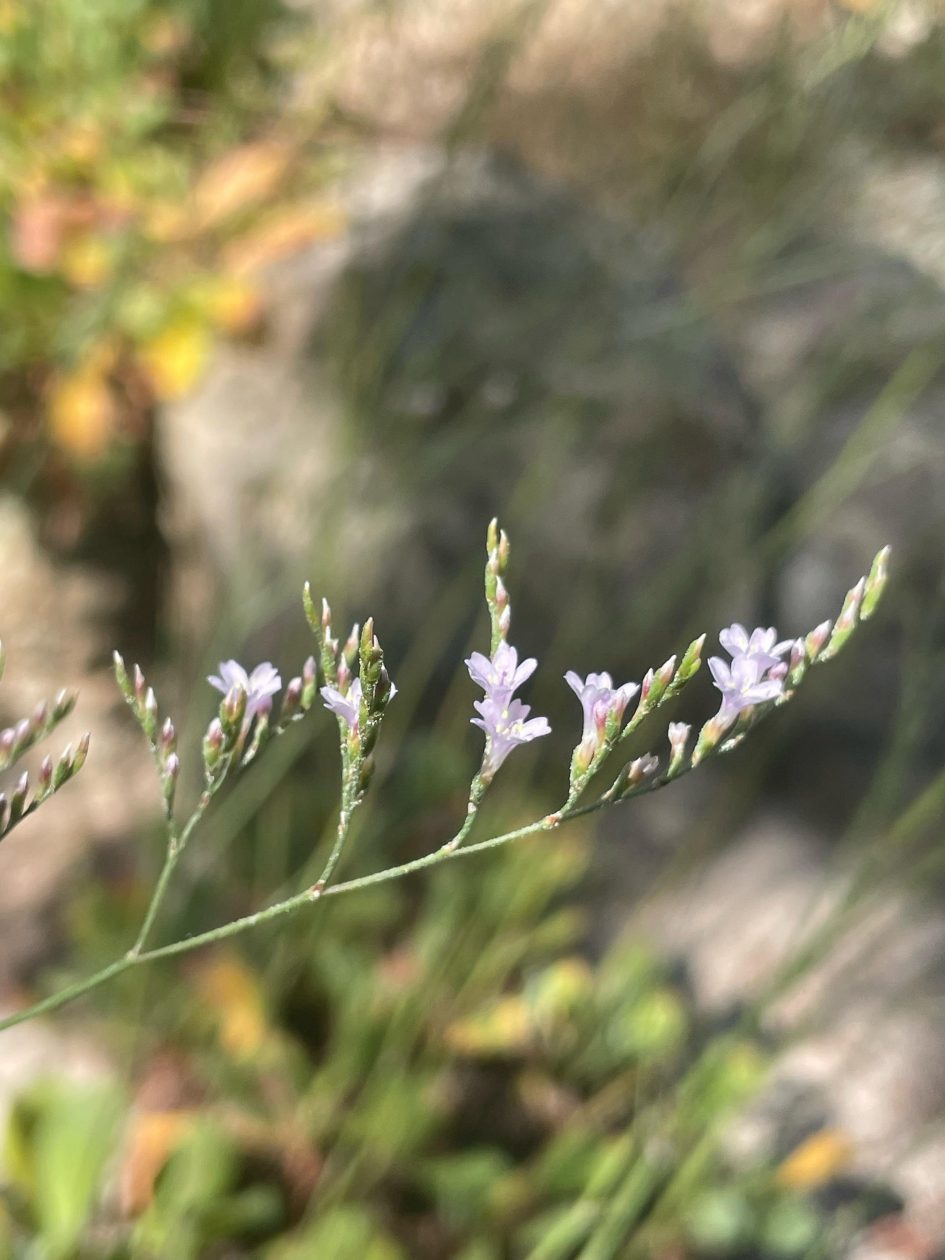Limonium magallufianum L.Llorens
CAT: saladina de Magalluf
ES: siempreviva
FAMILY: Plumbaginaceae
Synonyms:
DISTRIBUTION: exclusive endemic of Prat de Magaluf (Calvià, Mallorca)
CONSERVATION STATUS: Critically Endangered (CR). Protected under the LESRPE (List of Wild Species under Special Protection, Royal Decree 139/2011) and the Balearic Catalogue of Threatened Species.
PHENOLOGY: blooms in summer, peaking in July and early August. Fruits from September to October.
LIFE FORM: chamaephyte
HABITAT: community of sea lavenders in humid, saline meadows near the coast.
Limonium magallufianum was described in 1985 by the Mallorcan botanist Lleonard Llorenç. As its scientific name suggests, it is a species exclusive to Prat de Magaluf, in the southwest of Mallorca. It is a highly threatened endemic species that grows in a community with other sea lavenders composed of nine species, five of which are unique to this location. The area is under intense human pressure, as it is surrounded by urban developments and tourist resorts and is frequently visited by pedestrians. For more than twenty years, conservation efforts have focused on protecting this developable land to preserve the set of unique species that live in increasingly scarce habitats such as salt marshes and wetlands.
The Magaluf sea lavender is a halophyte (tolerant to high salt concentrations), perennial, tufted plant with woody, sparsely branched stems. Like most sea lavenders, it has leaves with excretory glands on the upper surface, which allow it to expel salt. The floral scape (leafless stem bearing the inflorescences) is a branched panicle that can reach up to 85 cm in height. The flowers are hermaphroditic, with violet petals, and the fruit is an achene protected by the calyx, containing a single seed. Like many Limonium species, it can reproduce through apomixis, meaning it can produce fertile seeds from the ovule without fertilization, resulting in offspring that are genetically identical to the parent.
At the Botanical Garden, specimens are preserved in the coastal and salt marsh plant section; and the seed bank holds four accessions: one collected in 1985, three in 2000, and one in 2006.
